The rusty-spotted cat is one of the smallest of all the small wild cats. It is found in India and Sri Lanka (South Asia), mostly in forested areas but sometimes scrubs and grasslands. Recently the cat has also been seen north of India in Nepal,
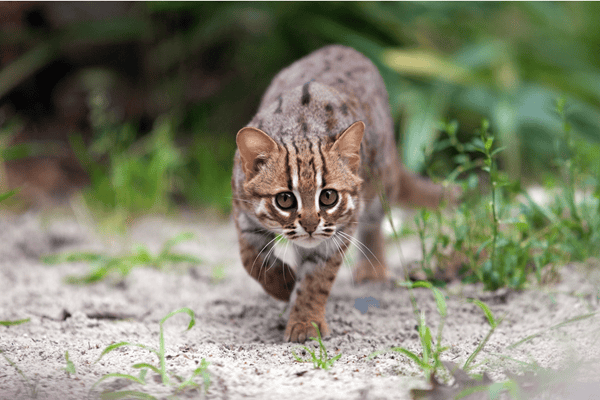
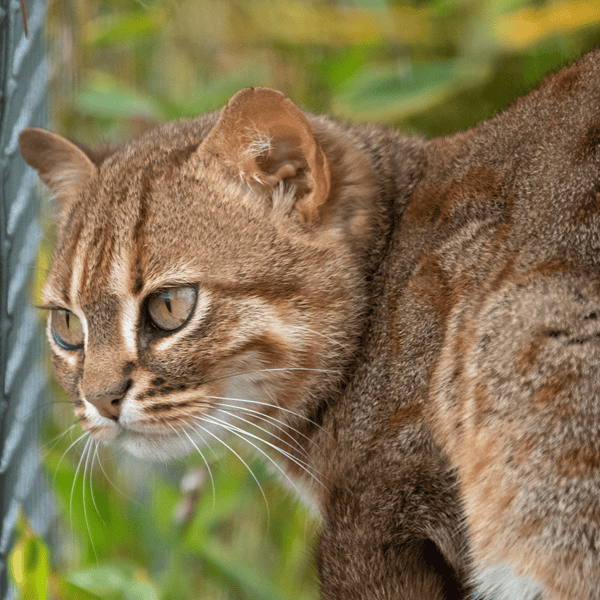
Scientific Name: Prionailurus rubiginosus
Conservation Status: Near Threatened
Population: It is estimated that there are less than 10,000 mature rusty-spotted cats in the wild.
Lineage: The rusty-spotted cat is a member of the Leopard Cat lineage. The Leopard Cat lineage includes two genus: Otocolobus and Prionailurus. There are five other cats in this lineage, the Pallas’s cat, flat-headed cat, leopard cat, Sunda leoaprd cat, and fishing cat.
Interesting rusty-spotted cat facts
- It is believed the rusty-spotted cat separated from this ancestor between 3.4 and 6.5 million years ago.
- The rusty-spotted cat is one of Asia’s smallest wild cats. Instead.
- Kittens are not rusty colored. Instead they have rows of black spots
- It has been nicknamed the “hummingbird of the cat family” because of its small size, speed, and agility.
- Despite its size, it’s considered a fierce hunter.
- They are skilled climbers.
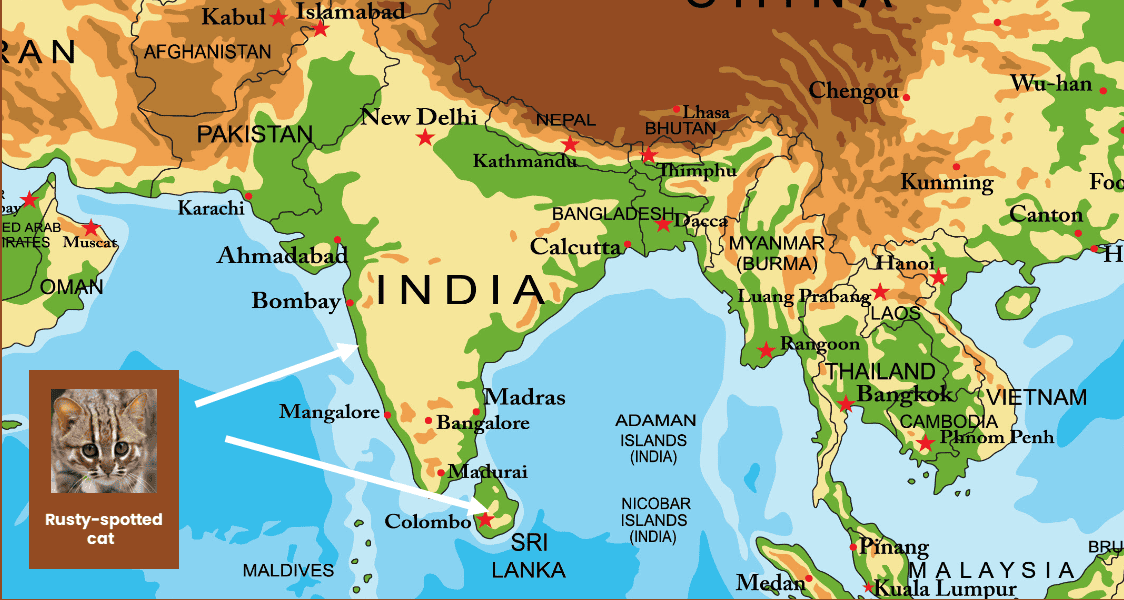
About the rusty-spotted cat
The rusty-spotted cat is believed to be nocturnal. It likely hunts in trees and on the ground.
Physical appearance
The rusty-spotted cat is one of the smallest wild cat species in the world. It weighs between 2 and 3.5 lbs, is approximately 14 to 19 inches long, and has a 5.9 to 12-inch tail. It is thinner and smaller than your typical house cat, and its legs are relatively short.
Rusty-spotted cats have short and soft fur. Their grey coat has small rusty-brown spots on the flanks, back, and head area. The cat’s face has two dark streaks on each cheek and stripes extending from the eyes to the shoulders. Their eyes are brownish to amber and relatively large. The cat’s tail has dark rings, and its underside is white with more large spots. Its ears are small and rounded. The soles of the rusty-spotted cat’s feet are black.
Habitat (where rusty-spotted cats live)
The rusty-spotted cat can be found throughout India, with a few sightings in Sri Lanka and Nepal. It is mainly found in wet and dry forests but has also been seen in wooded grasslands, scrublands, and rocky hills.
Rusty-spotted cats are known for their agility and are considered highly skilled tree climbers. They generally spend the day sleeping in hollow logs or areas with dense foliage.
 Hunting and prey (diet)
Hunting and prey (diet)
It is believed that they hunt on the ground during the evening. Their prey consists mainly of small mammals, usually rodents and birds. However, the cat has also been known to feed on insects, frogs, and lizards. Researchers believe that when the cat is threatened, it will climb and hide in trees.
Reproduction and lifespan
Gestation lasts for approximately 65 to 70 days. Female rusty-spotted cats will typically give birth to between one and two kittens, usually in a shallow, secluded cave. The kittens only weigh a few ounces and are marked with black spots. Their rusty-colored coat appears when they reach maturity. It is not known how long the rusty-spotted cat lives in the wild. In captivity, the cat has lived as long as 12 years.
Rusty-spotted cat conservation threats
Rusty-spotted cat illegal hunting and wildlife trade is banned in Sri Lanka and India. However, like most wild cats, their survival is threatened by habitat loss. Sometimes, the cat is hunted for food or to protect domestic animals. Their skins have also been seen in the illegal wildlife trade.
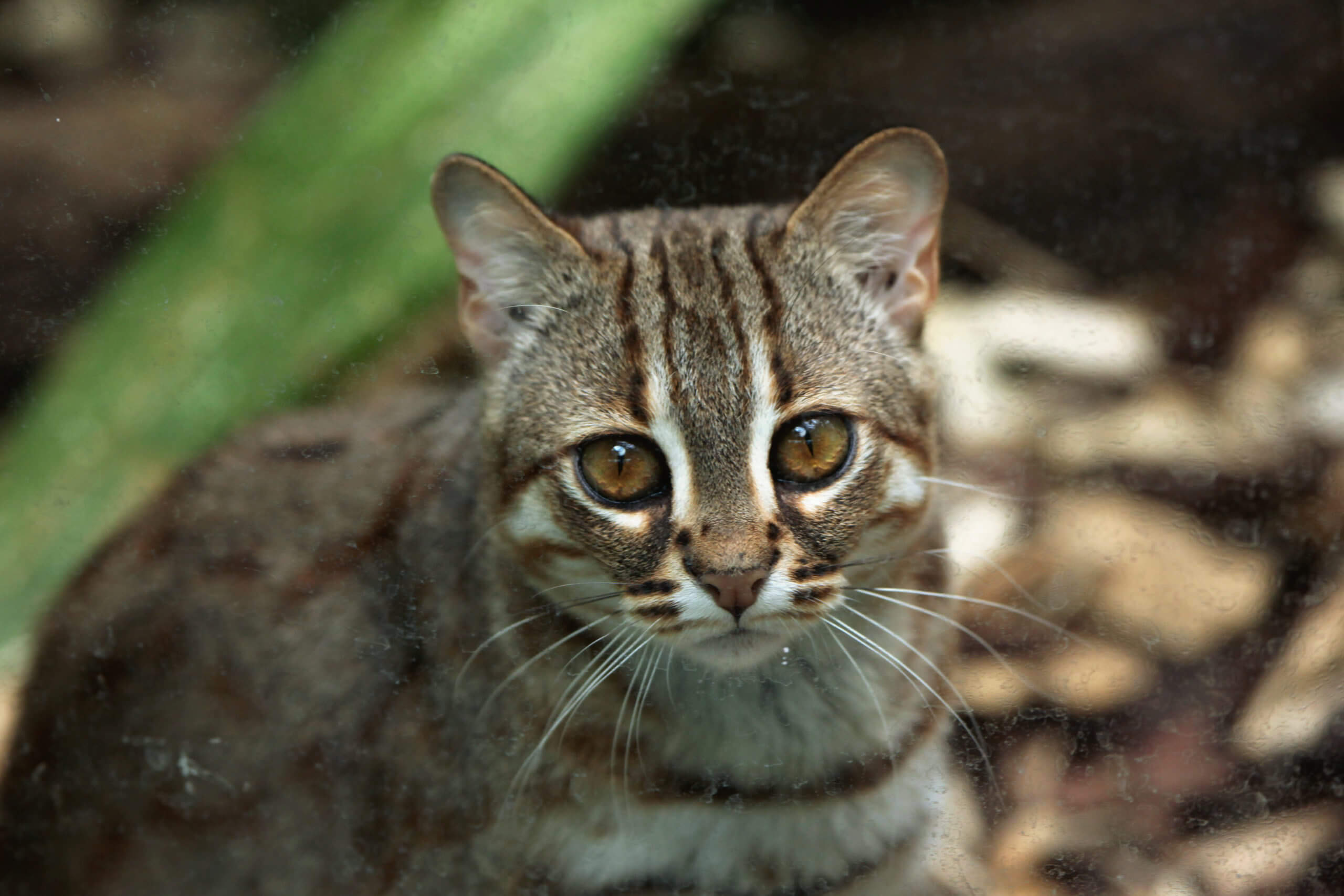
Rusty-spotted cat research and quotes
“Rusty-spotted cats, Prionailurus rubiginosus, are solitary animals, living alone in forests, and more recently in human dominated agricultural areas…Rusty-spotted cats are largely carnivorous and likely play a role in controlling populations of small vertebrates.” – 2013 “Prionailurus rubiginosus” Rusty-spotted Cat | Miles

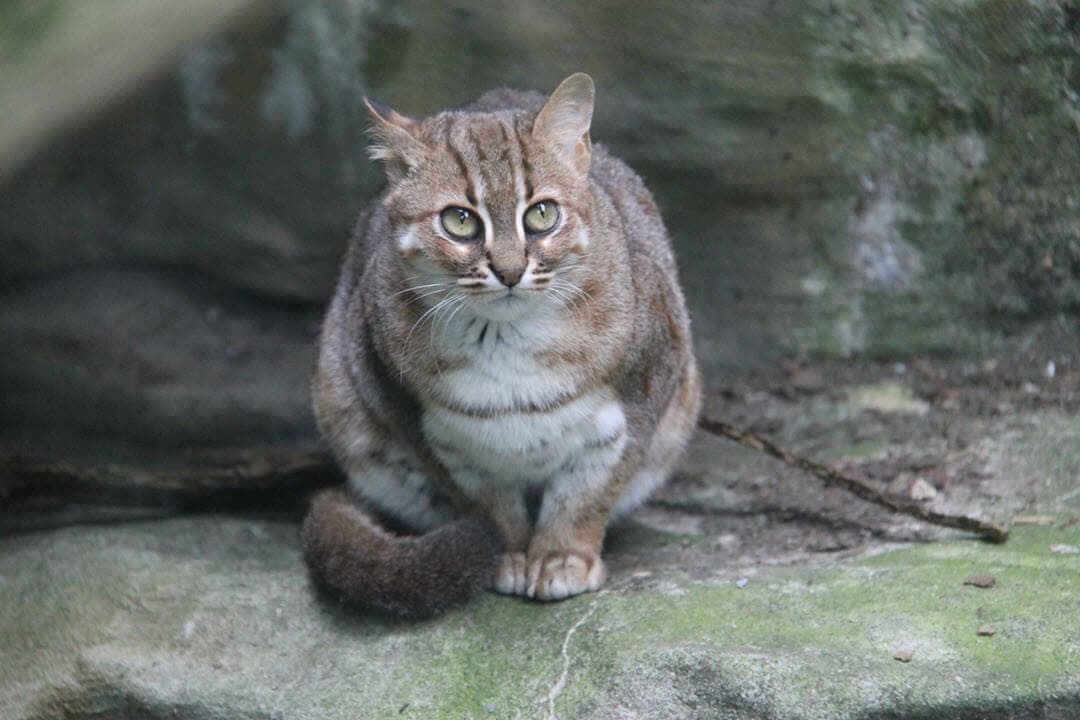
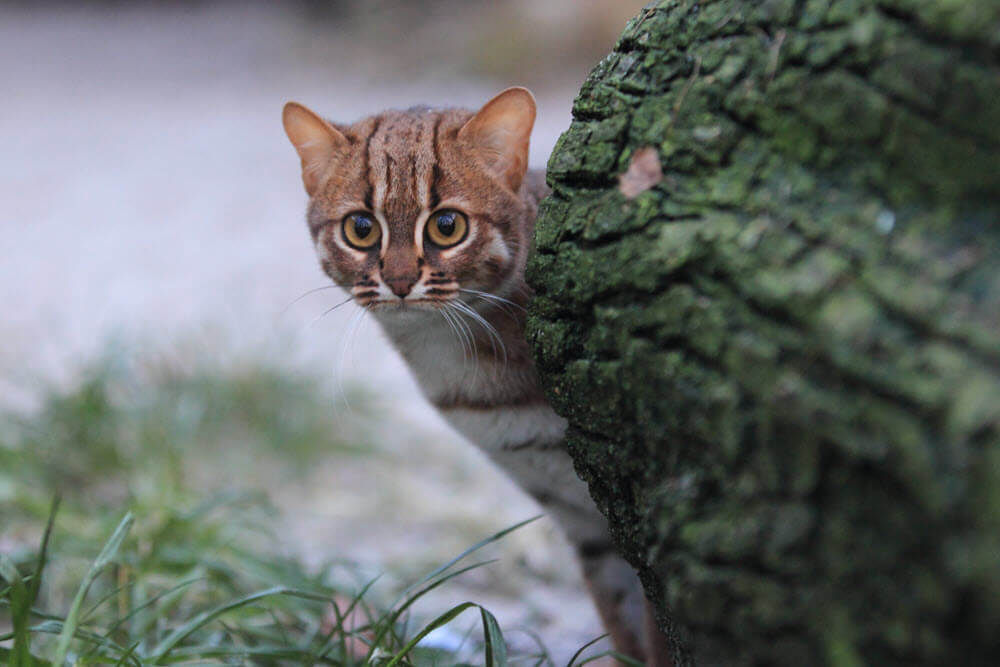 Hunting and prey (diet)
Hunting and prey (diet)

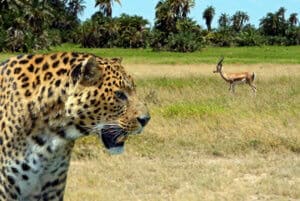








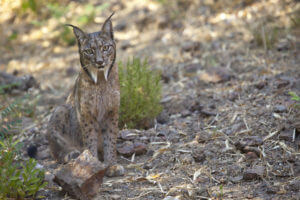




this is the best cat ive ever seen. please continue to share more cats. thank you
Love this cat!